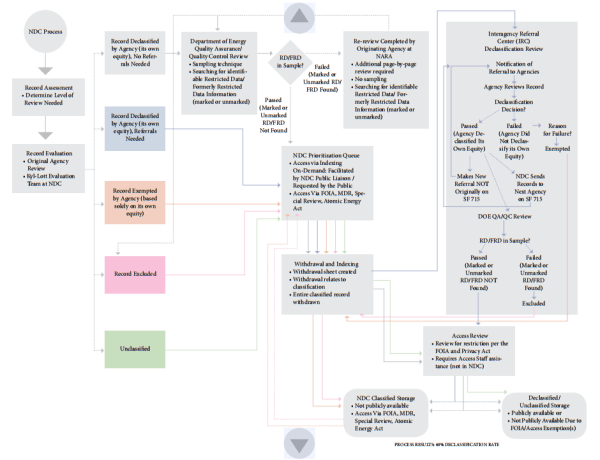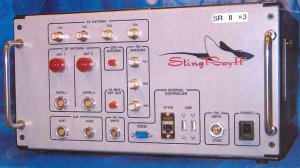Third National Action Plan Released, Senate CISA Vote Threatens Integrity of the FOIA, and Much More: FRINFORMSUM 10/29/2015

The US has just released its third National Action Plan updating its OGP commitments.
The Obama administration has just released its third National Action Plan updating its commitments to the Open Government Partnership (OGP), an international coalition working to make governments more transparent and accountable. As with previous plans, the third NAP includes a lot of potentially powerful transparency initiatives – like its commitments to streamline the declassification process, including establishing a “special systematic declassification review program” at the National Declassification Center “for previously reviewed and exempted historical Federal records that were accessioned to the National Archives and reviewed prior to the creation of the National Declassification Center in 2010.” The proof, however, will be in the pudding; specifically, the NDC will need to end its page-level “pass/fail” declassification review process of these documents to ensure their release to the public, followed by the declassification of historic documents at the presidential libraries, “the bulk of [whose documents] are being declassified at a glacial pace due to lack of resources, apparent lack of urgency, and the wasteful equity referral re-review system.”

The current process for 25-year automatic declassification review, found in the PIDB’s December 2014 Report.
The Plan’s commitment to improving email preservation under the Capstone approach is also notable, but will only be effective in increasing transparency if agencies are actually made accountable for determining and preserving their emails that are “deemed appropriate for preservation.”
The NAP’s FOIA commitments are less encouraging. The Plan’s FOIA modernization promises focus on building a consolidated online FOIA service, which was promised in the Second National Action Plan, and not delivered. Of greater concern is the accessibility promises surrounding Section 508 of the Rehabilitation Act, which requires that people with disabilities have comparable access to information as people without disabilities. Agencies often complain that making documents 508 compliant, and posting 508-compliant FOIA requested documents on their websites, is too burdensome, and the NAP commitment to developing universally-designed software codes to address accessibility issues may delay agencies compliance with posting these documents online. Hopefully the drafters of the NAP will soon explain why and how this will not be the case.
The Director of National Intelligence released a transparency implementation plan this week that “establishes guidelines for increasing public disclosure of information by and about U.S. intelligence agencies.” The plan does not include any specific commitments or establish any timeframes for implementing the plan, but it “has the potential to provide new grounds to challenge unnecessary secrecy and to advance a corresponding ‘cultural reform’ in the intelligence community.” Of note, the plan instructs agencies to “consider the public interest to the maximum extent feasible when making classification determinations.” Steven Aftergood notes on his blog Secrecy News that:
This is a remarkable statement that goes beyond any requirement in existing classification policy. In particular, President Obama’s 2009 executive order 13526 on classification does not include the public interest as a factor in original classification decisions at all.
The new plan dutifully states that it does not “modify or supersede” executive order 13526. But it does in fact present a different classification construct, or at least a different emphasis. As the plan says, it “reinforces Executive Order 13526, which governs classification standards, while also guiding the IC to consider the public interest to the maximum extent feasible in conducting declassification reviews in order to make as much information available as possible while protecting intelligence information.”
Archive FOIA Project Director Nate Jones noted in an interview with Federal News Radio that while the plan is a positive step, it does not address classified information or the larger problem of whether or not the intelligence community should classify data in the first place. “In the past, [the IC] has needlessly classified information that has been of public interest. This plan, Jones said, does not address that problem and only facilitates the release of information that is declassified.” Jones gave the example of two National Security Agency documents about the mysterious 1961 death of UN Secretary General Dag Hammarskjold, requested by the United Nations, National Security Archive, and others, that the NSA bafflingly still refuses to release, citing harm to US national security.
The Senate “overwhelmingly” passed CISA – the Cybersecurity Information Sharing Act of 2015 – this week over concerns from open government groups, including the National Security Archive, and the technology sector. Senator Patrick Leahy’s (D-Vt.) amendment, which would have addressed CISA’s sweeping FOIA exemptions by striking the new “b(3) exemption” from the bill, failed 37-59-4, and Senator Al Franken’s (D-Mn) amendment, which would have narrowed the bill’s definition of a “cybersecurity threat”, failed 35-60-5. Troublingly, despite its impact on the FOIA, the bill was not considered by the Judiciary Committee, which has primary jurisdiction of the FOIA, and was instead “considered in a closed markup of the Senate Intelligence Committee.”
Invoices obtained thanks to a FOIA request show that the IRS purchased Stingray cellphone surveillance devices, bringing the total federal agencies known to use the device up to 13. The instruments are most likely used by the IRS’ criminal investigation division, which is increasingly working with the FBI and other agencies on aggressive drug cases. Obtaining the powerful devices, which mimic cell phone towers and can place a cellphone’s location, “require[s] only a low-level court order called a PEN register, also known as a ‘trap and trace’, to grant permission for their use” – making it likely that the number of federal agencies using the devices will not stay capped at 13.
A report issued by the Justice Department inspector general found that eight of the fourteen Drug Enforcement Administration agents involved in a prostitution scandal received bonuses ranging from $1,500 to $32,000, in clear violation of agency policy. More troubling, a DEA internal affairs log released under the FOIA earlier this month shows that agents routinely keep jobs – to say nothing of receiving bonuses – despite serious misconduct. Out of 50 instances where the DEA’s Board of Professional Conduct recommended an employee be fired, only 13 were actually terminated (and in some instances agents were reinstated by the federal Merit Systems Protection Board).
U.S. District Court judge Gladys Kessler has shot down the government’s efforts to withhold videos of Guantanamo detainees being force-fed, noting in her nine-page opinion that “What the government is really saying is that its classification system trumps the decisions of the federal courts as to the public’s access to official court records.” The case stems from the Defense Department’s May 2014 admission that it had video recordings of force-feeding Guantanamo detainees in the wake of the detainees’ accusations that the US was manipulating data on inmates’ hunger strikes, including how many times inmates are subjected to force feedings to keep strike numbers artificially low. The court initially ordered the government to turn over the 34 videotapes last May. It’s worth noting that Kessler also ruled last November that the military does not need to modify the way it force-feeds detainees, even though one, Abi Wa’el Dhiab, argued in court that the technique was tortuous.
A federal appeals court has dropped the ACLU’s lawsuit arguing that the National Security Agency’s mass surveillance is unconstitutional because the suit relied on “the subjective fear of surveillance.” The court cyclically ruled that the ACLU’s claims were subjective “because the NSA did not admit to having collected any of the information it was alleged to have collected.” Judge TS Ellis III – who dismissed a 2006 case brought by a German man claiming the CIA abducted and tortured him as part of its “extraordinary rendition program” on the grounds that the trial would risk national security – wrote that the ACLU’s difficulty in proving illegal spying had occurred “comes with the territory.”

A list of Soviet actions during the War Scare cataloged by the PFIAB’s authors. Each is elaborated upon in the report.
The newly released Soviet “War Scare” report – previously classified “TOP SECRET UMBRA GAMMA WNINTEL NOFORN NOCONTRACT ORCON” and published recently after a 12-year fight by the National Security Archive – reveals that the 1983 War Scare was real. According to the President’s Foreign Intelligence Advisory Board (PFIAB), the United States “may have inadvertently placed our relations with the Soviet Union on a hair trigger” during the 1983 NATO nuclear release exercise, Able Archer 83. This newly declassified PFIAB document provides the strongest evidence to date that the danger of the War Scare was real, as the only study written with access to all US intelligence files on US/NATO actions and the Soviet response in the fall of 1983.

Vermeer, Johannes – Woman reading a letter – ca. 1662-1663 – back at the National Gallery of Art until December 1.
This week’s #tbt document pick is chosen with the return of Johannes Vermeer’s “Woman in Blue Reading a Letter” to the Smithsonian’s National Gallery of Art (its previous showing in 1995 was interrupted by a government shutdown). This week’s #tbt pick is a list of all the artwork acquired by the Smithsonian Institute in 2011, released thanks to a FOIA request.
Happy FOIA-ing!
Want to sign up for the FRINFORMSUM email newsletter? Click here.
Trackbacks
Comments are closed.


Reblogged this on Scoop Feed.